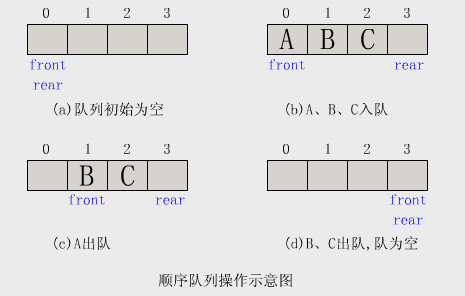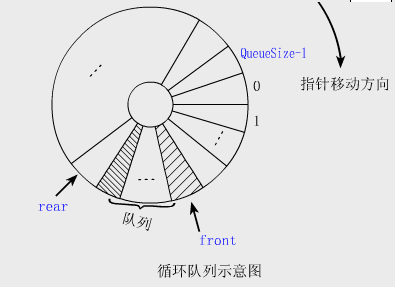C語言資料結構-順序佇列
阿新 • • 發佈:2018-12-30
順序佇列
順序佇列與順序表相似,只不過其具有佇列的運算規則。資料只能從隊尾進,對頭出,為先進先出方式。
分別用兩個數來表示隊頭front和隊尾rear的位置,其只能向前增加,不能退後,這樣容易溢位且浪費空間,因此一般用迴圈佇列來表示,及佇列空間的首尾相連的,當達到隊尾時可以跳轉到最開始位置。
下面為順序佇列和迴圈佇列的結構圖:
迴圈佇列一般用一個額外的數來表示隊滿或隊空,或者空一個元素,用來測試尾指標加1是否等於頭指標。
下面利用第一種方式實現佇列及其相關運算:
#include <stdio.h>
#define QueueSize 20
//typedef int 測試結果為:
DeQueue:1
DeQueue:2
DeQueue:3
The queue: 3 4 5 6 9
The length of the queue : 0


